Apple iPhone XR review: The best iPhone for most people
This exercise in compromise paid off.
Everywhere I go, I see people hanging onto their old iPhones — those devices have usually seen better days, but there they are, still ticking away. Sometimes, as socially anxious as I am, I ask people about it. More often than not, their answers are the same: They don't want to spend $1,000 on a new phone. I get that, and apparently, Apple does too: That's why the iPhone XR exists. Apple hasn't shied away from selling cheaper smartphones: There was the 5c some years ago, and the SE after that. And let's not forget that Apple always sells the prior year's models for less once the shiny new stuff comes out. The iPhone XR is a step in a different direction. Instead of just repackaging old components, Apple took a lot of what makes the XS and XS Max great and built a brand new, more affordable frame around it. It's all about accessibility. A process like this is rife with compromises and, to be clear, Apple made quite a few of them in building the XR. To Apple's credit, though, the iPhone XR never really feels compromised. Sure, it's less flashy than its premium cousins — even so, the XR delivers everywhere it counts. When Apple launched the iPhone X last year, it quickly became the company's most popular phone, but its price tag meant it was out of reach for a lot of people itching for an upgrade. That left the company with a new challenge: finding a way to squeeze all the important bits from its new, premium smartphones into a body that doesn't cost nearly as much. The answer? Craft a bigger, iPhone X-style body with the same glass-and-aluminum finish found in devices like the iPhone 8 and 8 Plus. The XR is a little wider, thicker and taller than the XS, but it never feels unwieldy. In fact, since it in sits in a nice little sweet spot between the XS and the massive Max, the XR arguably offers the best blend of size and usability. Build quality is up to Apple's usual standards, which is to say it's impeccable. The iPhone XR may cost less than the phones I reviewed a month ago, but it doesn't feel like it. In fact, I've come to prefer the XR's design over the others: It feels like a taller, narrower iPhone 8 Plus, and its front glass has been less prone to scratching than devices like the Pixel 3 XL. Oh, and did I mention it comes in a bunch of colors? There are a handful of new options — yellow, coral and a light blue — joining mainstays like white, black and Product (RED), and honestly, I'm a little bummed I only got the white one to test. (In some unofficial polling around the Engadget offices, yellow seems far and away the most popular.) Picking a smartphone to live with for a few years is a highly personal choice, and Apple poured a lot of work into making sure there was an eye-catching XR for just about everyone. And then there's the screen, which has become a lightning rod in certain corners of the internet. At 6.1-inches, Apple's Liquid Retina display feels like the right screen size for most people. The thing is, it runs at 1,792x828 -- that's well below either of the premium phones that Apple just released, not to mention lots of midrange Android phones released this year. Apple says this the "most advanced" LCD screen anyone has every squeezed into a smartphone but does that really matter when it isn't as pixel-dense as most of the other phones in this price range? Well, in a word: yes. After living with the iPhone XR for a week, I can safely say that most people (which might not include those of you reading Engadget) simply will not care about the dip in resolution. It's true that you can see some individual pixels if you press your nose right up against the glass. It's also true that you can easily spot the difference between the XR and XS displays when zooming in on photos. In typical, everyday use, though, the difference is negligible. Yes, you can tell it's different from a premium Apple display, and yes, it would've been nice if Apple just went with the industry standard 1080p. Even so, I've found this display to be more than good enough for reading, poking around on Instagram and watching YouTube videos -- I seriously doubt the average person upgrading from an older iPhone will find much to complain about. Colors are bright and vivid, and viewing angles are still excellent (though not quite as good as earlier LCD-equipped iPhones). Apple's choice to go LCD on the XR does mean the company had to make a few more compromises. The bezels that run around the display are a little thicker here than on the XS, mostly because of the bright row of LEDs that run along the bottom of the panel. (Remember: Unlike OLEDs, LCD screens need to be backlit.) Because Apple couldn't just leave the bottom bezel thicker than the rest, there's a little extra space around the whole screen. They don't detract from the screen itself, but they're definitely noticeable. While it has nothing to do with the type of screen being used, the lack of Apple's pressure-sensitive 3D Touch technology is noticeable. A lot of people I know never actually use it, and it almost certainly would've driven the XR's cost up, but hey, it debuted on the 6S back in 2015, and ditching it in a phone that is otherwise superior feels a bit odd. These days, it's not uncommon to find smartphones with more than two cameras on their backs; just look at Huawei, LG and Samsung if you haven't seen one yet. Meanwhile, dual cameras have become de rigueur for the industry. I can count on one hand the number of phones we've reviewed this year that had only one main camera. Well, we can add the iPhone XR to that list. It helps, however, that the XR's single camera is a very good one: It's the exact same 12-megapixel wide-angle camera Apple uses in the XS and XS Max, and it still produces some lovely photos. You'll find a lot of detail and some excellent colors in the resulting stills, and it's been surprisingly handy in low-light thanks to its f/1.8 aperture and sensor with deeper tranches between those pixels. Apple's Smart HDR kicks in to improve dynamic range pretty often, too, which is often really helpful for preventing parts of some photos from being blown out entirely. But overall Apple's approach here is a measured one that churns out consistently solid (if somewhat neutral) photos. And it even stays off completely in some situations when the camera doesn't think it's necessary. With all that said, the XR's camera may seem disappointing if you're used to the kind of flexibility a dual camera provides. The difference is most obvious when you're trying to do two things: Zoom in on your subject and take a bokeh-filled portrait. The zoom issue is pretty obvious. Because there isn't a secondary telephoto camera here, the XR has to rely on digital zoom, which just means it blows up the image and crops out the edges. This is a great way to lose detail in a hurry, especially if you're trying to get really tight on a far-off subject. The same is true of other single-camera phones like the Pixel 3, but Google's intelligent sharpening does a better job of keeping things crisp (or at least, crisper than they would've been otherwise). Apple is leaning on some clever computational photography techniques to get its images looking as good as they do, but Google is doing a better job at pushing single-camera smartphones to their limits. And then there's portrait mode, a feature that debuted on the dual-camera iPhone 7 Plus. Reconfiguring it for a single, primary camera must've taken some work, and Apple pulled it off quite well. Backgrounds are appropriately blurred out while the subject's face remains in sharp focus (you can change the level of bokeh after you've snapped the photos). The thing is, Apple just doesn't offer the same flexibility with portraits here as it does on its other phones — even older ones. Consider this: Though the camera does a pretty good job isolating the subject from its background, you can't use Apple's fancy mono-color mode to make moody portraits when you're using the main camera. All you get are natural, studio and contour lighting effects, which, in fairness, continue to work very well. (Don't worry about your selfies, though -- because the XR uses the exact same 7MP TrueDepth camera up front, you can still easily add some drama to your headshots.) The most important thing to keep in mind is that portrait mode doesn't work at all unless you're pointing the main camera at a person. Which I guess makes sense -- this is portrait mode we're talking about. But you can forget about getting bokeh-filled images of your pets or your dinner. Feel free to try: If you do, the phone will actually tell you it can't detect a person's face. Some of you won't care because the results are usually pretty great, but if you really care about taking the best smartphone photos you can, the XS and XS Max offer some notable advantages. While it's limited in ways other iPhone cameras aren't, the iPhone XR is still a great performer. I'm not going to sit here and pretend that it's as flexible or as impressive as some dual cameras, but what we've got is, once again, more than enough for most people. I've been talking a lot about what makes the iPhone XR distinct from the XS and the Max, but all of these phones share some very important traits. All of them, for instance, use the same TrueDepth camera system packed into the notch above their displays. That means the XR is just as fast at recognizing faces and unlocking itself as its more expensive siblings. The XR also ships with iOS 12, which I've already spent a lot of time talking about in the past. I won't rehash it all here (especially since there's a full review for you to check out), but it's the most polished, capable version of iOS Apple has released in a while. Here's the most important similarity, though: The XR uses the same A12 Bionic chipset as the XS and the XS Max, and it shows. This thing is fast. As I mentioned in an earlier review, the A12's two high-performance cores are up to 15 percent faster than last year's phones, and the four "efficiency" cores get the job done while eating up less power. Big improvements to the quad-core GPU also means graphically rich games like Fortnite run like a dream. (Unfortunately, none of this changes the fact that I remain pretty awful at Fortnite.) The performance gains in non-graphically intense, day-to-day tasks won't be too apparent if you're coming from a device like the iPhone 8 or 8 Plus, but there's enough power on tap here that you won't have to worry about upgrading for a while. It certainly doesn't hurt that the A12 packs a revamped Neural Engine, which has been upgraded to handle up to 5 trillion operations per second. That means apps and software that rely on complex machine-learning models run better on the XR than on earlier devices. You've probably already used some ML-heavy features without even realizing it: Apple uses it for facial detection when unlocking the phone, and for facial tracking when you're covering up your face with a weirdo Animoji. More important, augmented-reality apps benefit from this additional horsepower when detecting surfaces and tracking objects. I've tested a few on the XR, and the experience felt a touch more seamless here than on the older iPhone X. That might not mean much to you now, but the industry is starting to lean more heavily on ML and AR. Having this extra bit of silicone should go a long way in keeping it from feeling dated in a year or two. There is, however, one area where the XR does much better than either the XS or the XS Max: battery life. Simply put, the XR lasts the longest of any iPhone we've tested in the past two years. Because this is a review unit, I can't exactly crack this thing open to see how big the battery is, but it's a safe bet that the lower-resolution screen is partially to thank. Whatever the reason, the results were clear: I've routinely been able to squeeze north of seven hours of screen-on time out of the XR, which even more than I got out of iPhone XS Max's massive battery. Apple is very fond of saying the XR has significantly better battery life than last year's iPhone 8 Plus, and that checks out too: in our rundown test, the XR looped a video while connected to WiFi for 16 hours and 17 minutes, which is more than an hour and a half longer than the 8 Plus. Here's where things start to get a little tricky. With a price tag starting at $749, the XR is notably less expensive than the XS, and it's a very strong option for people upgrading from older iPhones or considering iOS for the first time. That said, if your smartphone allegiance isn't completely set yet and you're looking for the best features on a budget, there are other options you should consider. OnePlus has made a name for itself over the years by building relatively inexpensive, flagship-quality phones, and this year's OnePlus 6 is no different. It packs a beautiful 6.28-inch OLED screen running at 1080p and one of Qualcomm's top-tier Snapdragon 845 chipsets (though not one of the special, super-high-end ones companies like ASUS have used) for buttery-smooth performance. There's even a dual camera around the back, which is vastly improved over the prior year's model when it comes to clarity and low-light performance. All this can be had for around $530, though you're probably better off waiting a bit — the company is going to unveil its next-gen OnePlus 6T the day before Apple shows off some new iPads. And then, of course, there's the Pixel 3. Google didn't push the envelope much with its hardware this year, but the smaller Pixel 3 — not the XL — sells for just $50 more than the base iPhone XR, and packs one of the most impressive single cameras we've ever used. No, seriously: it's fantastic. Throw in a lightly tweaked build of Android 9.0 Pie (another fantastic software update we got this year) and a clean, elegant design, and smartphone shoppers who haven't decided on iOS versus Android have a tough decision to make. Then again, if battery life is your big concern, the XR takes the crown. I alluded to this earlier, but building a device like the iPhone XR is an exercise in thoughtful compromise. How do you give people as good an iOS experience as possible for $750? Apple's answer -- by folding top-tier performance, valuable software and a solid camera into a cheaper, well-made body -- seems like a winner. That's not to say the XR is perfect: People concerned about the display's resolution have a point, and the camera just isn't as flexible as other ones Apple has produced.
A fresh face
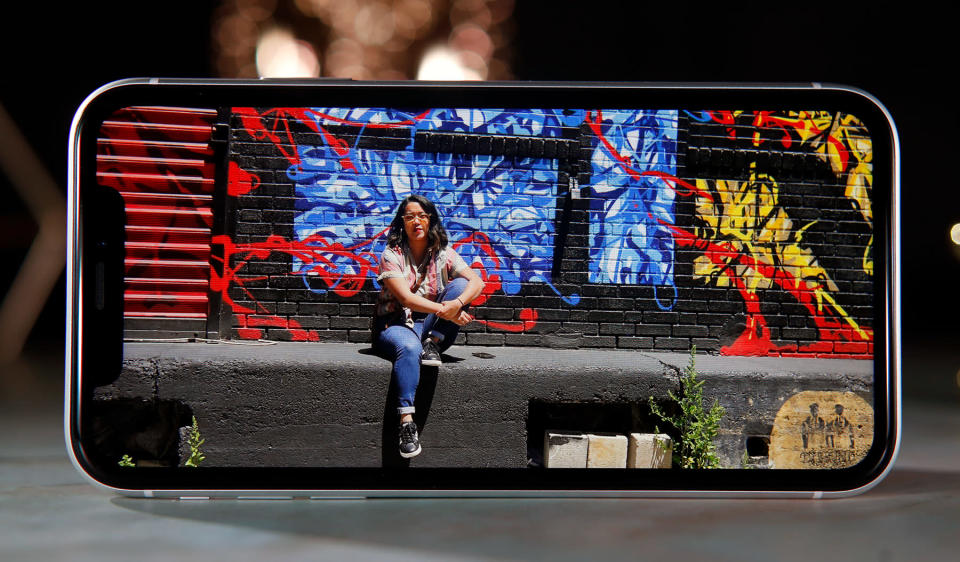
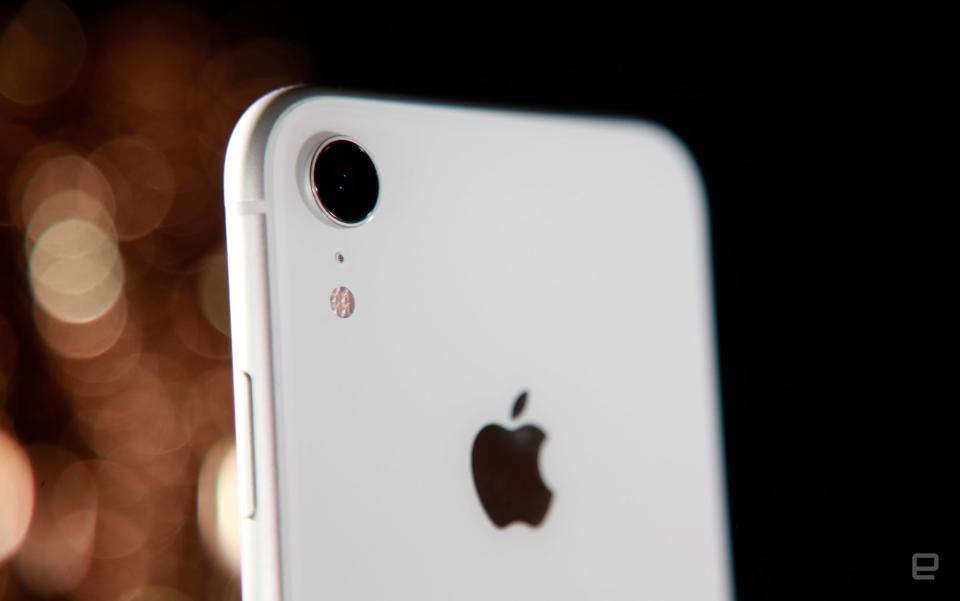
One camera, and a handful of tricks
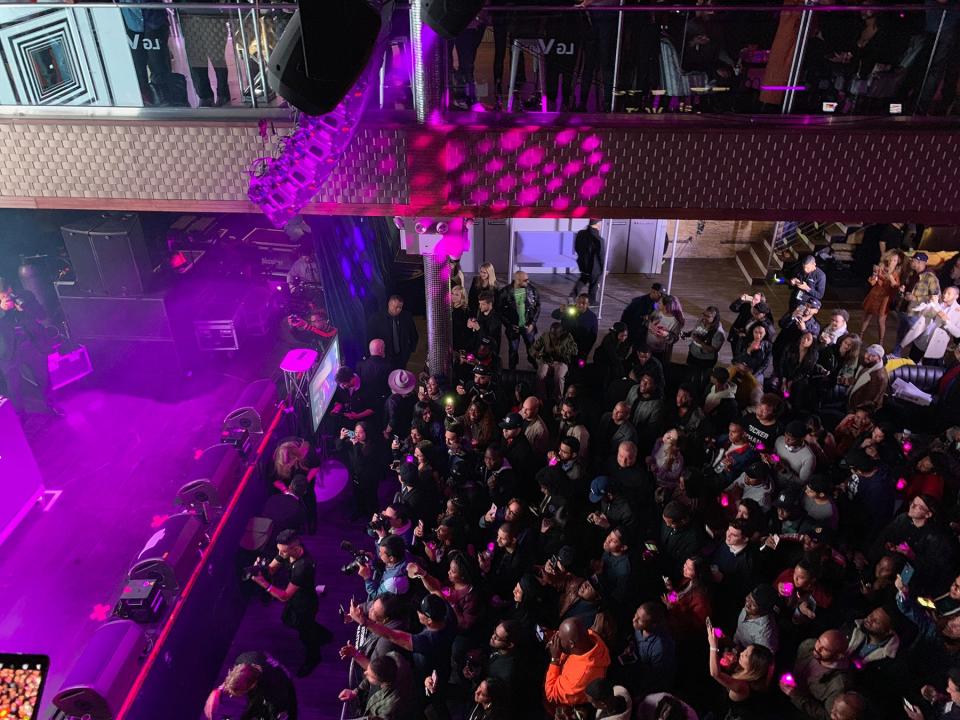
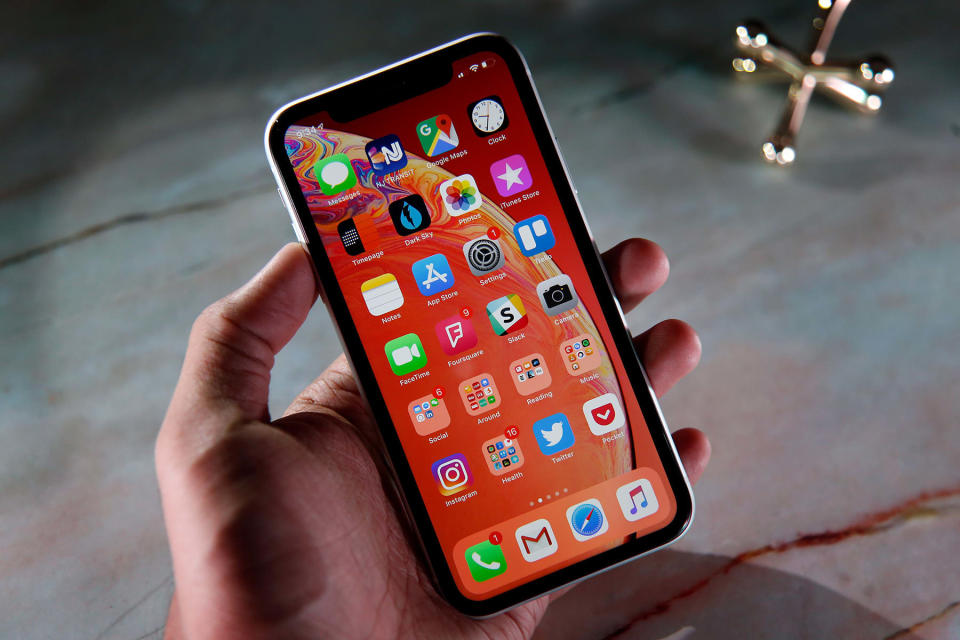
More of the same
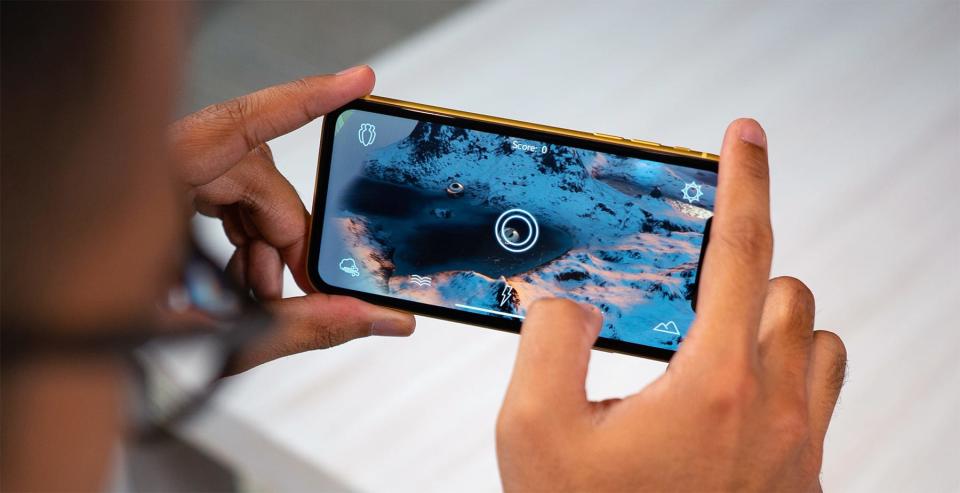
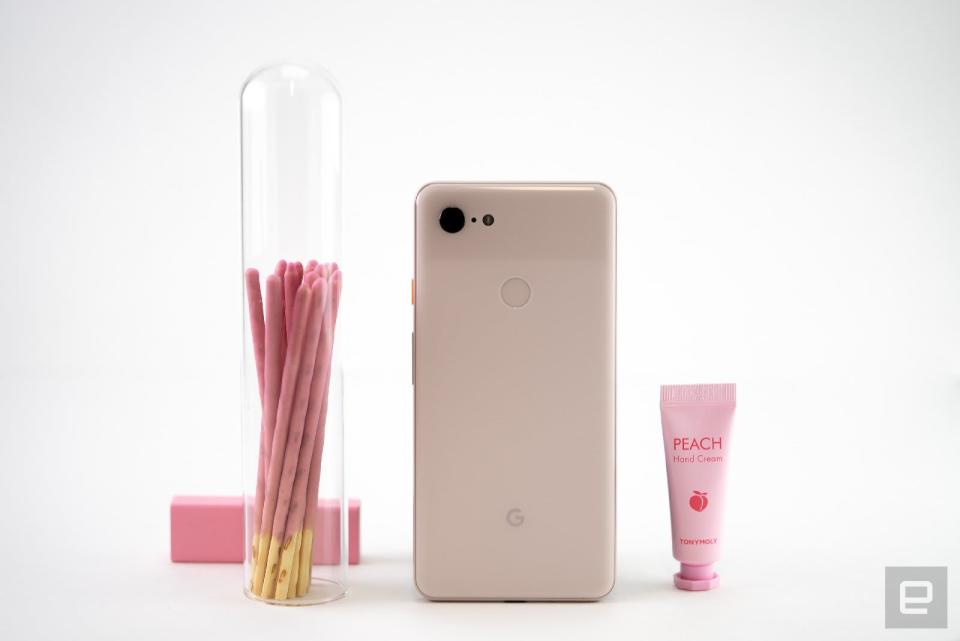
The competition




































